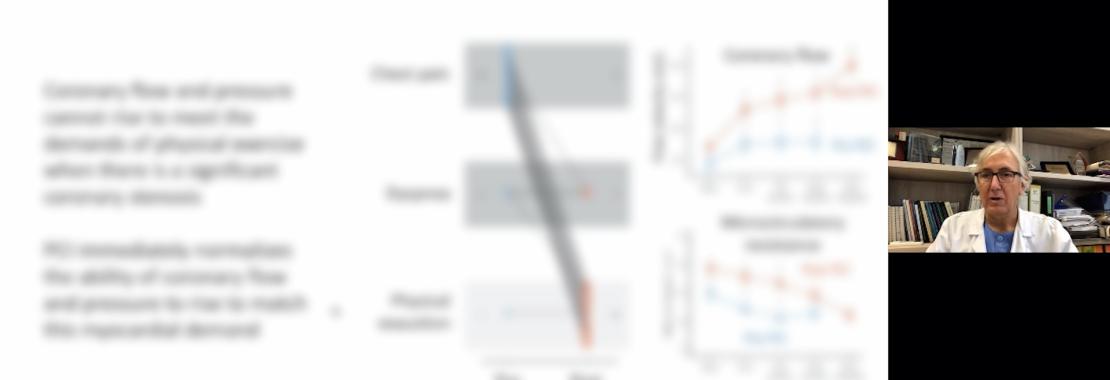The presentation addresses different questions and related data for the analysis of PCI:
- Why do we perform PCI to treat angina?
- PCI improves angina by treating flow limiting stenosis
- Is PCI better than antianginal medication?
- ISCHEMIA trial (impact of an invasive strategy on angina pectoris)
- How good is PCI in relieving angina in available PCI studies?
- ABSORB IV trial (angina through 1-year follow up)
- MR-INFORM trial
- Post-PCI angina and procedural developments
- Is PCI superior to CABG in relieving angina?
- SYNTAX study about angina frequency (SAQ) with PCI or CABG, also at 5 year FU
- What may cause post-PCI angina?
- Post-PCI ischemia may an obstructive or non -obstructive cause
- Residual SS/functional residual score on long-term outcomes
- DEFINE PCI: blinded analysis of post-PCI results and 1-year clinical outcomes
- HAWAKEYE trial: relevance of residual stenoses after PCI
- TARGER FFR trial: post PCI FFR values and optimization strategy
- PIOS (Physiology-guided Incremental Optimization Strategy)
- May post-PCI angina have a non-obstructive origin?
- Pre-existing microvascular dysfunction and PCI results
- Vasomotor disorders after stent implantation
Key messages include:
- PCI is a suboptimal treatment for angina in stable patients
- Potentially, the two more relevant causes of post-PCI angina are:
- Residual obstructive disease and
- Non-obstructive causes of myocardial ischemia
- Future research should clarify the best approach to manage these causes:
- Simulation/prediction of functional PCI results to plan intervention
- Assessment to final functional results of PCI followed by optimization strategies
- Pre-PCI assessment of obstructive and non-obstructive causes of ischemia
